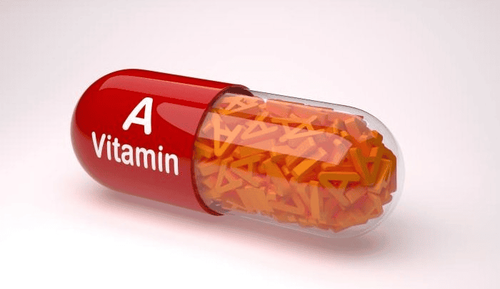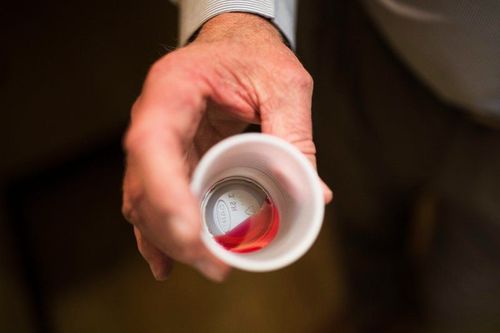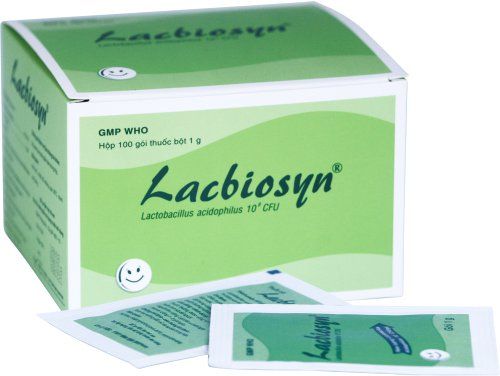This is an automatically translated article.
The article was professionally consulted by Specialist Doctor I Dang Thi Ngoc Chuong - Pediatrician - Pediatrics - Neonatology, Vinmec Central Park International General HospitalDiarrhea is a very common disease in children. Understanding medicines to treat diarrhea in children will help parents use drugs safely and effectively, reduce the duration and severity of diarrhea, and help children recover quickly.
1. Note when using medicine to treat diarrhea in children
Diarrhea is a very common disease, especially in children. There are many causes of diarrhea in children, of which the most common are Rotavirus, E.coli bacteria, Shigella, Salmonella enterocoltica, Vibrrio cholerae, etc. When children have diarrhea, they will pass loose stools many times. During the day (more than 3 times), in addition, the child may have vomiting, abdominal pain, gas, fever, cough, runny nose.
If dehydration is not present, children with diarrhea can be treated at home. Medicines to treat diarrhea at home are mainly aimed at rehydrating, electrolytes and boosting immunity for children.
1.1 How to use Oresol solution in the treatment of diarrhea in children The key point in the treatment of diarrhea is to add enough water and electrolytes to the child, the more diarrhea and vomiting children have, the more fluid they need to rehydrate. . Oresol solution (ORS) is the best solution for rehydration and electrolytes. When choosing to buy ORS solution, parents should choose to buy ORS with low osmolality. This type of ORS has a lower concentration of sodium, glucose and total osmolality than the previous type of ORS. The advantages of low osmolarity ORS are reduced volume of diarrhea and vomiting, higher safety and efficacy.
| Thành phần |
Dung dịch ORS chuẩn trước đây (mEq hay mmol/L) |
Dung dịch ORS có nồng độ thẩm thấu thấp (mEq hay mmol/L) |
|---|---|---|
| Glucose | 111 | 75 |
| Kali | 20 | 20 |
| Natri | 90 | 75 |
| Chloride | 80 | 65 |
| Citrate | 10 | 10 |
| Độ thẩm thấu | 311 | 245 |
Before preparing ORS, please wash your hands thoroughly with soap. Utensils used for mixing must be clean. The solution after reconstitution is only used within 24 hours. If it is not used up after this time, it must be discarded and reconstituted.
ORS should be given to the child after each episode of diarrhea and between episodes until the diarrhea stops. The recommended dosage is as follows:
Children younger than 2 years old: give children 50-100ml after each diarrhea Children 2-10 years old: give children 100-200ml after each diarrhea Older children: give it to children demand.

Pha dung dịch Oresol theo hướng dẫn của nhà sản xuất
For young children, a syringe (no needle) or a dropper can be used to slowly inject the ORS into the child's mouth. For children older than 2 years, they can be given sips by spoon. Older children drink from a cup. If the child vomits after taking ORS, it should be stopped for about 10 minutes and then continue to give ORS solution but more slowly.
1.2 How to use zinc in the treatment of diarrhea in children Zinc supplementation is one of the new recommendations in the current treatment regimen for diarrhea in children. Zinc is a very important micronutrient in the immune system of children. When a child has diarrhea, he or she loses a large amount of zinc. Zinc supplementation will help children reduce the duration and severity of diarrhea episodes, at the same time enhance resistance, reduce the risk of new diarrhea episodes in the following months after treatment, improve appetite and child growth.
Should give children zinc as soon as they have symptoms of diarrhea. Taking zinc on an empty stomach will help absorb the drug better. The recommended dose of zinc in the treatment of diarrhea is as follows:
Children younger than 6 months: give children 10mg/day for 10-14 days. Children from 6 months and older: give children 20mg/day for 10-14 days. 1.3 Supplementing vitamin A for children with diarrhea When having diarrhea, the child's ability to absorb vitamin A decreases, while the need for vitamin A increases. Because the amount of vitamin A stored in the child's body is very low, children with diarrhea are very susceptible to eye damage due to vitamin A deficiency. Children with diarrhea should have an eye exam to detect corneal opacities and conjunctival lesions. . If these lesions are detected, it is necessary to give vitamin A to the child immediately with the following dose:
Children from 12 months to 5 years old: 200,000 units/dose. Children from 6 months to 12 months: 100,000 units/dose. Children under 6 months: 50,000 units/dose. The next day, give the child a repeat dose as above.
For children who have not shown signs of eye damage but are suffering from measles within a month or are severely malnourished, they also need vitamin A supplementation with the same dose.

Sử dụng vitamin A trong điều trị tiêu chảy, cần tham khảo ý kiến của bác sĩ chuyên khoa
1.4 Medicines to treat fever and diarrhea in children Children who are dehydrated may have a fever. In addition, children with diarrhea may have a fever due to infections outside the gastrointestinal tract such as pneumonia, otitis media, urinary tract infections, etc. Therefore, when children with diarrhea have a fever, they should be taken to the hospital. medical facilities to examine, to detect infections outside the gastrointestinal tract, especially when the child has been given enough fluids but still has a fever.
When a child has a high fever that requires immediate treatment, treatment includes the use of antipyretics such as paracetamol and appropriate antibiotics to treat the source of the infection.
2. When to use antibiotics for acute diarrhea?
Only use antibiotics for acute diarrhea when the child has bloody diarrhea, suspected cholera with severe dehydration and tested for amoeba, Gardia duoedenalis infection. Absolutely do not use antibiotics for common diarrhea because they are ineffective and can be dangerous. The appointment of antibiotics when acute diarrhea must be done by a doctor, parents absolutely must not buy antibiotics to treat their children.3. Drugs that should be used with caution in the treatment of diarrhea in children
Anti-diarrheal drugs, although commonly used, have no effect on treatment, and some drugs can be dangerous for children. Therefore, very limited use for children:Adsorbents such as Kaolin, Smectic, Attapulgite,... have the ability to cause constipation, inactivate toxins and diarrhea-causing agents. However, there is no clear clinical evidence demonstrating its effectiveness in the treatment of acute diarrhea in children. Drugs that reduce peristalsis such as Loperamide, Atropine, Opum, Paregoric,... can reduce the number of diarrhea episodes in adults but are not significantly effective in children. These drugs have a side effect of causing intestinal paralysis, prolonging the duration of diarrhea. In addition, the drug has a sedative effect, damaging the central nervous system. Bismuth subsalicylate: can reduce the amount of diarrhea stools in adults, but has little effect in children with diarrhea.














